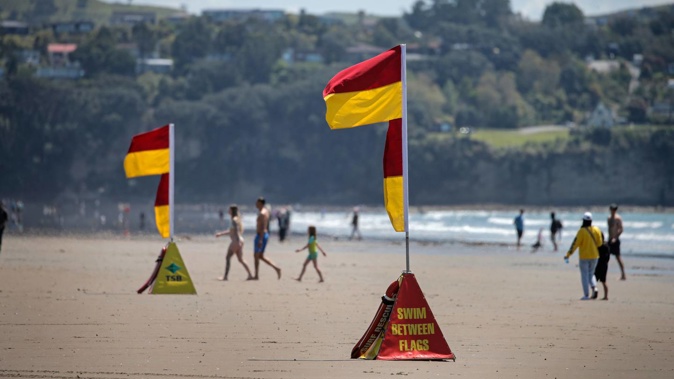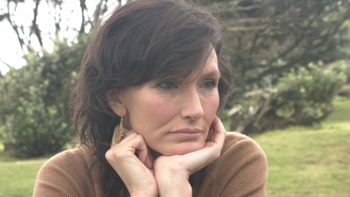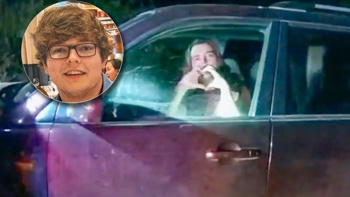
Simarpreet Singh, 17, had just finished a school exam when she went for a dip with her cousin at a rough Auckland beach. Tragically, the teen never came home.
It was November 23 last year when the girls headed to Karioitahi Beach southwest of the city and made their way out about 50 metres from shore.
Singh became caught in a rip and was pulled towards deeper water. She called for help as she was dragged away but was found dead shortly after.
The teen's death was followed by the death of 74-year-old Frances Carswell, in January this year.
Today, coroner Alexander Ho ruled they had drowned and issued a fresh call for the public to be wary of the risks at the beach.
Known for its rips and currents
Singh's cousin had quickly returned to shore to raise the alarm when it become clear the teen was in trouble.
Other beachgoers entered the water to help but it was too rough and they had no choice but to return to shore.
A surf lifesaving team was called and they launched an IRB about 25 minutes later, assisted by two helicopters.
But Singh was discovered face-down around 100m out to sea and was unable to be revived. She was pronounced dead on return to the beach.
Dr Mick Kearney, the national coastal safety manager for Surf Life Saving New Zealand, in a report to the coroner, said Karioitahi Beach was known for its rips and currents caused by sandbars separated by deep channels.
Kearney determined the rip currents in the mid-point of the tidal cycle would have made it extremely difficult to return to shore.
/cloudfront-ap-southeast-2.images.arcpublishing.com/nzme/74TLOKMVRAHXUIQRZK4G6QXHRE.jpg) 17-year-old Simarpreet Kaur Singh drowned while swimming with her cousin at Auckland's Karioitahi Beach. Photo / File
17-year-old Simarpreet Kaur Singh drowned while swimming with her cousin at Auckland's Karioitahi Beach. Photo / File
Ho said that in the past two years five people had drowned at Karioitahi Beach, and another four deaths were still under coronial investigation.
His investigation found that at the time of Singh's death, just one sign warns of danger at the beach, which was "inadequate in many respects".
"It did not comply with the relevant Australian/New Zealand standard. There was no clear indication of the hazard targeted by the sign. It said "check before you swim" but did not identify the specific hazards, such as rip currents or inshore holes, for which the reader ought to be checking."
Auckland Council installed an additional set of signs in March. "Had these new signs not been commissioned I would have recommended, with the strongest possible force, that they should be," Ho said in his decision.
Ho also raised concerns about a lack of cellphone coverage at the beach, making a formal recommendation that the council engage with providers about delivering consistent coverage at the beach.
'Caught by surprise'
Frances Carswell was spending the January 4 public holiday with her family at Wenderholm Beach in Auckland.
The family spent the morning in the water and on the shore, stopping for lunch. Returning back to the sea, Carswell and her sister were mid-torso deep in water.
The sisters began to feel a rip and Carswell called to a man on a surfboard for help. A witness said Carswell appeared anxious, but not in distress.
Carswell was helped back to shore, reportedly going under the water several times. Arriving on the shore, she was unresponsive. CPR was given, but she could not be revived.
A forensic pathologist found the death was consistent with drowning, with her heart and kidneys showing signs of hypertension and the lungs showing signs of emphysema.
Nothing in the heart or lungs indicated an acute medical event, but the pathologists said that they could not entirely exclude the possibility.
Kearney deemed the current Carswell was caught in was unlikely to be a rip - instead a strong current caused by the Puhoi River estuary.
"The strength of the tidal current appears to have caught Frances by surprise. However, it is possible that her attempt to tread water with the current or to access the surfboard, and her pre-existing medical conditions, may have been contributing factors to her death."
Her death notice in the Herald described her as a "much-loved mother, mother in law and kind, fun nana".
Ho concluded her death was an accidental drowning. As part of his recommendations, he considered the nine signs around the Puhoi River mouth, but lack of signs near the access points to the beach.
"A casual beachgoer heading for the main beach would not encounter any of
the warning signage currently in place," Ho said. He recommended more signs be installed near the beach.
Outside of his formal recommendations in both cases, Ho said he considered Surf Lifesaving's safety messages worthy of repeating heading into summer.
Those messages included choosing to swim at a patrolled beach and swimming only between the flags, not overestimating your own ability in rough conditions, and paying attention to nearby rips and currents.
"If in doubt, stay out."
Take your Radio, Podcasts and Music with you









